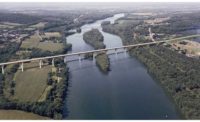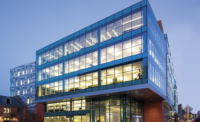ENR MidAtlantic's 2015 Owner of the Year: DC Public Schools








With work delivered through the DC Dept. of General Services, DC Public Schools is in the midst of a multibillion-dollar capital program that is not only addressing long-overdue needs, it is also delivering world-class K-12 public schools. The DCPS modernization and stabilization program, expected to cost in excess of $3.5 billion, will result in more than 12 million sq ft of newly constructed or renovated space. Seven years on, the program's focus has evolved from an early blitz of repair and stabilization efforts to a series of extensive modernization projects that far exceed requirements. In March, Dunbar High School earned LEED Platinum certification. By achieving 91 points out of a possible 100 base points for LEED, Dunbar became the highest-scoring school in the world certified under the U.S. Green Building Council's LEED for Schools-New Construction system.
In light of its recent achievements, ENR MidAtlantic named DC Public Schools its 2015 Owner of the Year.
Bridget Stesney, deputy chief of facilities and IT initiatives with DCPS Office of the Deputy Chancellor for Operations, says the department's goal is clear: "We need to show parents that we are serious about providing quality schools where kids want to come and learn."
From a facilities standpoint, meeting that mission is not so straightforward. In modernizing its inventory of schools, DCPS aims to meet or exceed student, parent and community expectations, all the while conforming to District of Columbia regulations regarding sustainability standards and work-force requirements.
Jonathan Kayne, interim director of the DC Dept. of General Services, says working with DCPS to find that balance is the program's central challenge. DCPS's educational specifications provide a framework that DGS helps translate into viable facilities planning. "It's a collaboration," he says. "DGS brings expertise to the table with respect to construction and helping to develop state-of-the-art facilities. But we also make sure what we're programming and what we're building ultimately create the best environments for the kids."
The road map toward developing a portfolio of modernized facilities has required officials to tread new paths over the years. After Adrian Fenty was sworn in as mayor in 2007, he brought in Allen Lew to direct school modernization efforts. An architect by training, Lew had recently made his mark managing construction of the Washington Convention Center and the Nationals baseball stadium. Although Lew is no longer in that role, some of his legacy remains. Efforts started with a summer repair program that stabilized dozens of schools. Meanwhile, officials reworked how best to deliver long-term solutions to DCPS's ailing facilities. In addition to its stabilization efforts, the master facilities plan would ultimately include a series of large-scale modernizations.
A major component of that plan was a phased modernization program initiated in 2009. Under that plan, work would be completed in a series of phases during summers while students were on vacation. Typically, Phase 1 addresses academic spaces, Phase 2 addresses support spaces and Phase 3 provides system upgrades.
To help streamline design and construction, Lew instituted the use of a modified design-build delivery method based on similar ones used on the convention center and stadium projects. Under this method, DGS hires the architect, then brings on a design-builder at around the design development (DD) phase for early engagement on design and cost estimating.






